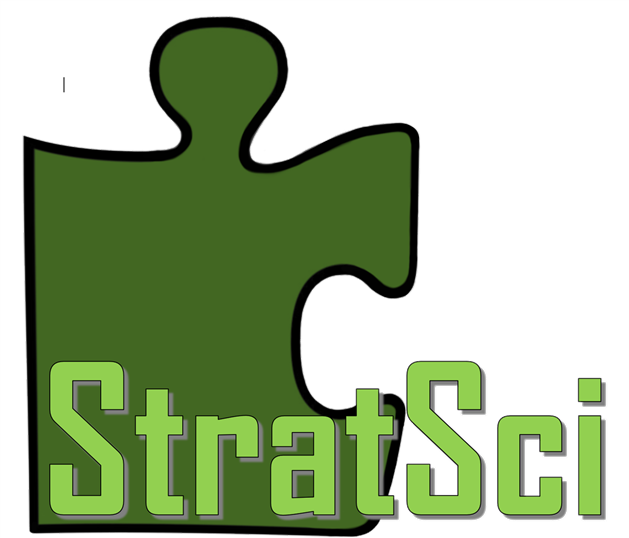
TLDR – The business model is a part of the toolkit used in business strategy.
Is a business model the same thing as a business strategy? Yes and no.
Business models are how you make money and how the business works. Not just “I’m going to open a coffee shop that sells to such and such demographics.” A Business Model is basically developing a Cost curve financial model based on everything you want to do, and comparing those costs to – can you make enough money to cover those costs? So using the coffee shop example, you figure out your fixed costs like rent and salary labor (how many people and what do they do?), insurance, licenses, financing, semi-variable costs like coffee machines, coffee filters, utilities and hourly labor, and variable costs like cups, sugar, flavoring, coffee, etc.
First, you have to throw out the indoor waterfall idea because you can’t afford it. Then you add all the rest up, and wow, it costs like $10,000 a month to run your coffee shop before you ever sell a cup of coffee. So you figure out the fancy flavored sugar & cream filled coffee that is popular sells about $4-$8 a cup. And given your pricing curve your coffee costs roughly a $1 a cup in costs, so given variable costs – you have to sell about 4,000 cups of coffee a month, or 1,000 cups of coffee a week, or roughly 150 cups of coffee a day with a staff of you and 3 part time people working 30 hour weeks just to break even. That model also assumes you are living in your parent’s basement. To really make a profit you want to sell close to 200 – 300 cups of coffee a day. Then you gotta figure out how to sell 300 cups of Coffee a day, how to compete with other coffee shops, etc.
Now semantically speaking – The above is a financial model as much as a business model. The complete business model from a business school perspective involves how you sell coffee, why you sell coffee, target customers, business culture, how you organize your operations. All coffee shops share effectively the same basic financial model, but may have significant differences in “business model” – different culture, branding, operations, logistics, pricing, marketing, advertising, financial controls, training, HR policies, recruiting and hiring practices. Some sell merchandise, some are bookstores, some have poetry reading or live music, some serve food, some are part of a larger business, or at your library.
Many people will argue that the cost curve has little to do with the parts of the business model that they focus on. I will tell you, without a cost curve and financial business model, it’s really hard to get a business loan or investment money. You need the financial half of the business model (which is built on organization, operations, pricing to estimate cost and revenue), the other half of the business model is how you expect to sell.
The cost curve is a financial summary of the business model is the necessary part that tells you the numbers that constrain the operational, cultural, business development, marketing advertising, etc. It gives you your realistic budget and resource limits.
At its base the Business Model is understanding what business you are in, and how you will make money. Doing that without a cost curve is certainly possible, but risky. The literature on Business Models gets really wonky and philosophical, with hundreds of definitions that can, will, and do include many parts of business strategy.
So what is business strategy?
That’s a larger subject, with even more definitions, hundreds of books and opinions on the subject. At the national meeting of the Association for Strategic Planning, I can ask a dozen strategy professionals for the definition of strategy, and get 30 or 40 different answers in a single lunch.
At the time of the writing (2017) Wikipedia does not have an entry for business strategy – it says see strategic management, strategic planning, etc..
Business strategy is knowing how to execute and adapt your business model and financial realities in a constantly changing world. Business strategy is how you grow and change your business. Business strategy is what do you do when your business model isn’t working? Business strategy is adding additional business models that work in parallel with your core business model.
Maybe your Coffee shop adds a catering service or starts selling used books. Maybe you have lots of people hanging out with personal electronics so you add charging stations. Maybe you have too many people hanging out so you remove the charging stations. The best trick I ever saw for coffee shops was to give away free coffee on opening day, and pay people to show up and make it look busy the first week – tricks everyone into going to the really popular coffee shop. But that only works if you are in a high traffic area where people will notice. Every tactic and strategy has its time and place.
Business strategy is a cycle of gathering information about your business and how it interacts in the bigger picture and the future; making plans to adapt your business model and survive in the future, and actually make those changes to your business model happen. And making additional changes and adaptation that you were not expecting when you made the plan. You keep going through that cycle in one way or another, formal or informal, until you retire or go out of business.
Business strategy is the changes you make today to give to a better tomorrow.
Business strategy is a fancy way of saying that your business will either evolve or die.
Your changing business model is simply a tool that is a part of your evolving business strategy.

Leave a Reply